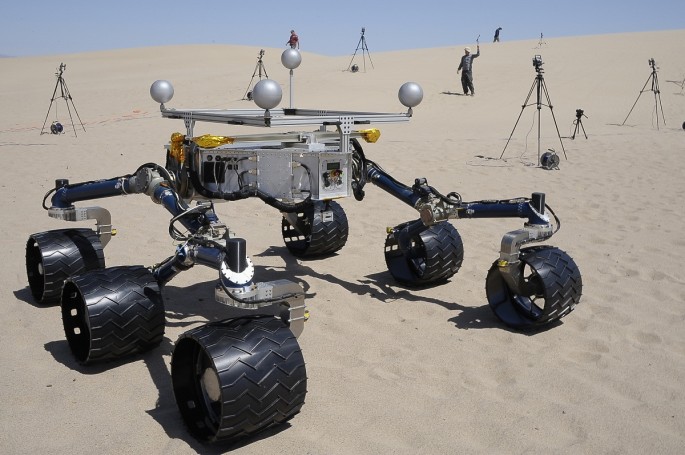NASA's Curiosity Rover has confirmed the presence of methane on Mars. The finding has prompted rampant speculations about the existence of alien life in the environment of the red planet.
According to Phy, a team of scientists, including Francisco Javier Martin-Torres of Andalusian Institute of Earth Sciences (CSIX-UGR), did a detailed study of the findings obtained by the tunable laser spectrometer in the SAM (Sample Analysis at Mars) instrument of the Curiosity robot. The data was acquired over the period of 605 soles or Martian days.
The report notes that the groundbreaking discovery "puts an end to the long controversy on the presence of methane in Mars, which started over a decade ago when this gas was first detected with telescopes from Earth."
At the same time, the findings open new avenues for the research about the origin of the production of the gas--which could indicate at "some type of biological activity." It is said, methane in Earth's atmosphere comes into existence through activities of living organisms.
Based on some current models, if methane really existed on Mars, it would be present for on an average 300 years. And during this time span, it would get homogenously distributed in the atmosphere of the red planet. However, in the absence of a model the findings were "were all called in doubt, and the results were attributed to the instruments employed in their detection."
Meanwhile, SAM has been detecting basal level of methane concentration on Mars and has confirmed "an event of episodic increase of up to ten times this value" during a period of 60 Martian days.
NASA's MAVEN (Mars Atmosphere and Volatile Evolution) will be delving further into the subject. Also, Trace Gas Orbiter (TGO), the mission jointly to be launched by the European and Russian Space Agency, will make further measurements of the methane gas on Mars at a larger scale.
The study and the findings by Scientists from MSL (Mars Science Laboratory) mission was published in journal named "Science."



























